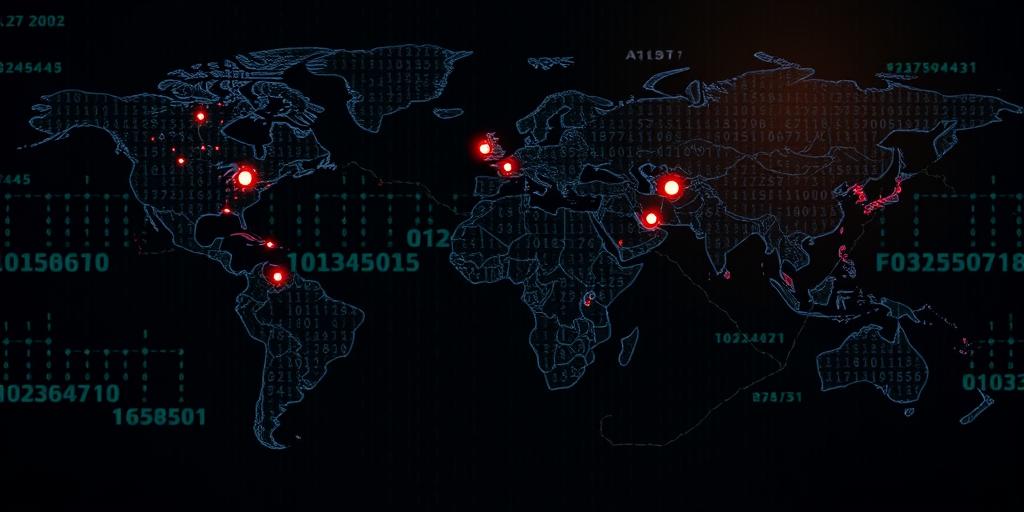Cybersecurity Threats for Global Corporations in 2025
As we look ahead to 2025, global corporations face an evolving and increasingly sophisticated landscape of cybersecurity threats. This article will delve into the key threats that organizations should be aware of and prepare for, ensuring they can protect their assets and maintain operational resilience.
1. AI-Powered Cyberattacks
Artificial intelligence (AI) is rapidly transforming the cybersecurity landscape, and not just for defensive purposes. In 2025, we anticipate a significant rise in AI-powered cyberattacks. These attacks will leverage machine learning to:
- Automate Vulnerability Discovery: AI can scan networks and systems to identify weaknesses more efficiently than traditional methods.
- Craft Highly Targeted Phishing Campaigns: AI can analyze user behavior and communication patterns to create personalized and convincing phishing emails.
- Evade Detection: AI can learn and adapt to security measures, making it harder to detect malicious activity.
To counter these threats, corporations must invest in AI-driven security solutions that can detect and respond to AI-powered attacks in real-time.
2. Ransomware-as-a-Service (RaaS) Expansion
Ransomware remains a persistent and costly threat. By 2025, Ransomware-as-a-Service (RaaS) models will become even more prevalent, enabling less sophisticated actors to launch devastating attacks. Key trends in RaaS include:
- Increased Specialization: RaaS providers will offer specialized services, such as negotiation and data exfiltration, making attacks more effective.
- Double Extortion Tactics: Attackers will not only encrypt data but also steal and threaten to leak sensitive information if the ransom is not paid.
- Targeting of Critical Infrastructure: RaaS attacks will increasingly target critical infrastructure, such as energy grids and healthcare systems, to maximize impact and pressure victims into paying the ransom.
Companies should implement robust backup and recovery strategies, coupled with proactive threat hunting and incident response plans, to mitigate the impact of RaaS attacks.
3. Supply Chain Vulnerabilities
Global corporations rely on complex supply chains, which can introduce significant cybersecurity vulnerabilities. In 2025, supply chain attacks will continue to be a major concern. These attacks target:
- Third-Party Software: Attackers can compromise software vendors to inject malicious code into widely used applications.
- Hardware Components: Counterfeit or compromised hardware can be introduced into the supply chain, creating backdoors for attackers.
- Service Providers: Outsourced IT and security services can be targeted to gain access to multiple organizations.
To address these risks, companies must implement rigorous vendor risk management programs, including security assessments, continuous monitoring, and incident response planning.
4. Deepfakes and Disinformation Campaigns
The rise of deepfake technology poses a new and insidious threat to global corporations. By 2025, deepfakes will be used to:
- Spread Disinformation: Fabricated videos and audio recordings can be used to damage a company’s reputation or manipulate stock prices.
- Impersonate Executives: Deepfakes can be used to impersonate executives and trick employees into divulging sensitive information or transferring funds.
- Undermine Trust: The proliferation of deepfakes can erode trust in digital media, making it harder for companies to communicate effectively with stakeholders.
Organizations should invest in technologies that can detect deepfakes and develop strategies to counter disinformation campaigns, including proactive communication and media monitoring.
5. Insider Threats
While external threats often dominate headlines, insider threats remain a significant risk. By 2025, insider threats will be exacerbated by:
- Remote Work: The shift to remote work has blurred the lines between personal and professional devices, making it harder to monitor employee activity.
- Employee Burnout: Increased stress and burnout can lead to disgruntled employees who are more likely to engage in malicious behavior.
- Data Exfiltration: Employees may intentionally or unintentionally exfiltrate sensitive data for personal gain or to harm the organization.
Companies should implement strong access controls, monitor employee behavior, and provide regular security awareness training to mitigate insider threats.
Preparing for the Future
In conclusion, global corporations in 2025 will face a complex and dynamic landscape of cybersecurity threats. By understanding these threats and implementing proactive security measures, organizations can protect their assets, maintain operational resilience, and build trust with stakeholders. Investing in advanced technologies, fostering a culture of security awareness, and collaborating with industry peers are essential steps to navigate the challenges ahead.
Keywords: cybersecurity threats, global corporations, AI-powered attacks, ransomware, supply chain vulnerabilities, deepfakes, insider threats.
